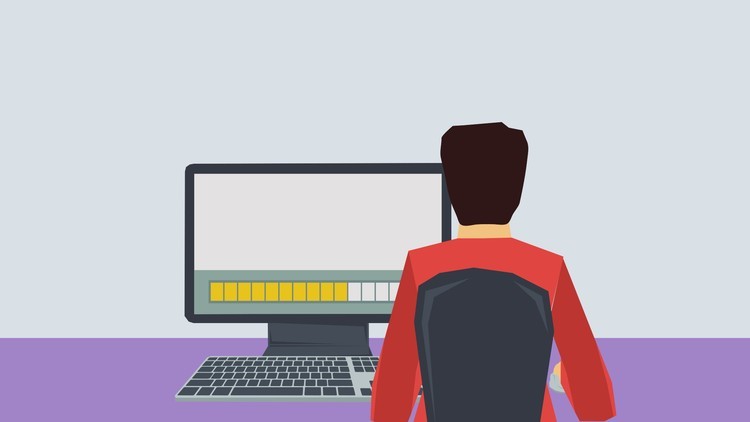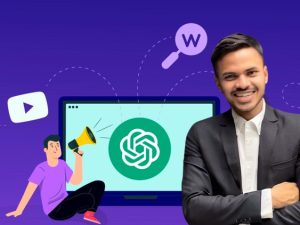Learn Professional Web Development Skills From Scratch -2021
- Description
- Curriculum
- FAQ
- Reviews
An app or a web service can have two broad parts: the frontend and the backend. The roles of these parts can be guessed from their names. The frontend is the part that you can “see”. It is the part that lets you interact with the app or service. The colours, animations, layout, and all the other cool stuff that adds to your experience of using the app or website is the frontend. The frontend is generally called the User Interface (UI). Example include HTML , CSS and JavaScript.
The backend is the part that you can’t “see”. It is the internal working of the application or website. This includes stuff like the server, the database, etc. Exaples include Ruby on Rails, Nodejs ,Python ,MongoDB, MySQL etc.
If you are a complete beginner, web development can be challenging —this course will guide you and provide enough detail for you to feel comfortable and learn the topics properly. You should feel at home whether you are a student learning web development (on your own or as part of a class), a teacher looking for class materials, a hobbyist, or someone who just wants to understand more about how web technologies work.
Topics include:
-
HTML
-
CSS
-
Bootsrap
-
JavaScript
-
Nodejs
-
Expressjs
-
MongoDB
-
Create database
-
Interacting with database
-
Ruby
-
Ruby on Rails
-
Creating a basic website
-
Create apps that runs in web browser
-
Create a real-time chat application with Nodejs | Expressjs |MongoDB | Socketio
-
Create a blog application using Ruby on Rails
-
Deploying application on internet
-
Basic introduction to Git and Github
-
Chrome development tools
-
26What is HTMLVideo lesson
-
27Anatomy of an HTML ElementVideo lesson
-
28HTML Element HierarchyVideo lesson
-
29Nesting ElementsVideo lesson
-
30Empty elementsVideo lesson
-
31Basic anatomy of an HTML DocumentVideo lesson
-
32Basic structure of an HTML documentVideo lesson
-
33Create HTML document structure - part 1Video lesson
-
34Create HTML document structure - part 2Video lesson
-
35Create HTML document structure - part 3Video lesson
-
36Introduction to HTML AttributesVideo lesson
-
37Using HTML AttributesVideo lesson
-
38Marking UP TextVideo lesson
-
39Creating LinksVideo lesson
-
40Adding comments to your codeVideo lesson
-
41What is a source codeVideo lesson
-
42HTML ImagesVideo lesson
-
43Editing yout HTML DocumentVideo lesson
-
44Indenting your codeVideo lesson
-
45Viewing source codeVideo lesson
-
46Inspecting ElementsVideo lesson
-
47HeadingsVideo lesson
-
48ParagraphsVideo lesson
-
49Creating ListsVideo lesson
-
50Creating LInksVideo lesson
-
51Formatting TextVideo lesson
-
52Adding an IframeVideo lesson
-
53Creating divsVideo lesson
-
54Code commentsVideo lesson
-
55Using id attributeVideo lesson
-
56Using class attributeVideo lesson
-
57The SPAN elementVideo lesson
-
58Block level elementsVideo lesson
-
59Inline elementsVideo lesson
-
60HTML Forms - part 1Video lesson
-
61HTML Forms - part 2Video lesson
-
62HTML TablesVideo lesson
-
63HTML entitiesVideo lesson
-
64What we will createVideo lesson
-
65Planning and designVideo lesson
-
66Creating project directoryVideo lesson
-
67Creating HTML documentVideo lesson
-
68Adding content - part 1Video lesson
-
69Adding content - part 2Video lesson
-
70Adding content - part 3Video lesson
-
71Adding a tableVideo lesson
-
72Adding a form - part 1Video lesson
-
73Adding a form - part 2Video lesson
-
74What is CSSVideo lesson
-
75Ways to apply CSSVideo lesson
-
76Styling multiple propertiesVideo lesson
-
77Styling multiple elementsVideo lesson
-
78Modifying CSSVideo lesson
-
79Basic CSS SelectorsVideo lesson
-
80Adding css commentsVideo lesson
-
81The CSS Box ModelVideo lesson
-
82CSS Margin and Padding propertiesVideo lesson
-
83Changing background colorVideo lesson
-
84CSS Display PropertyVideo lesson
-
85Positioning and styling page titleVideo lesson
-
86CSS Font PropertyVideo lesson
-
87Google fontsVideo lesson

External Links May Contain Affiliate Links read more





